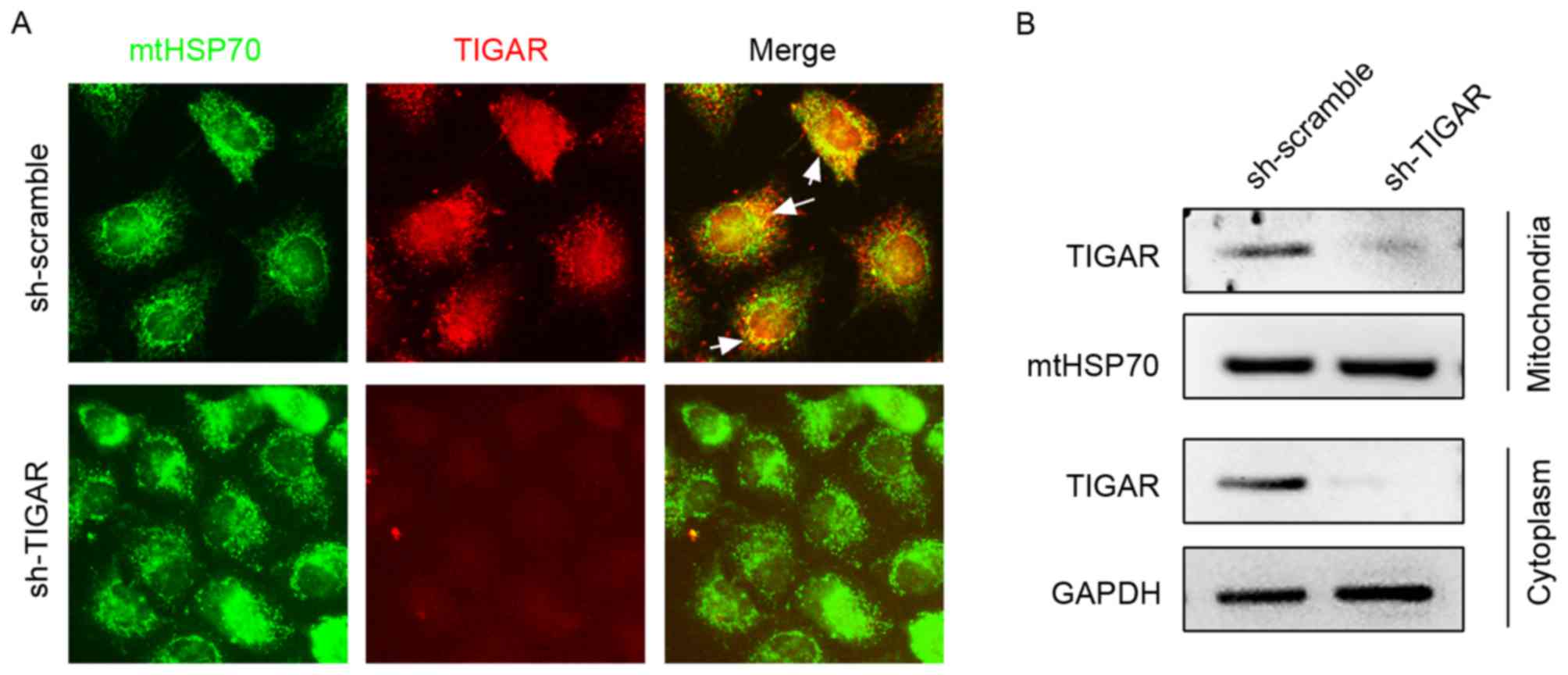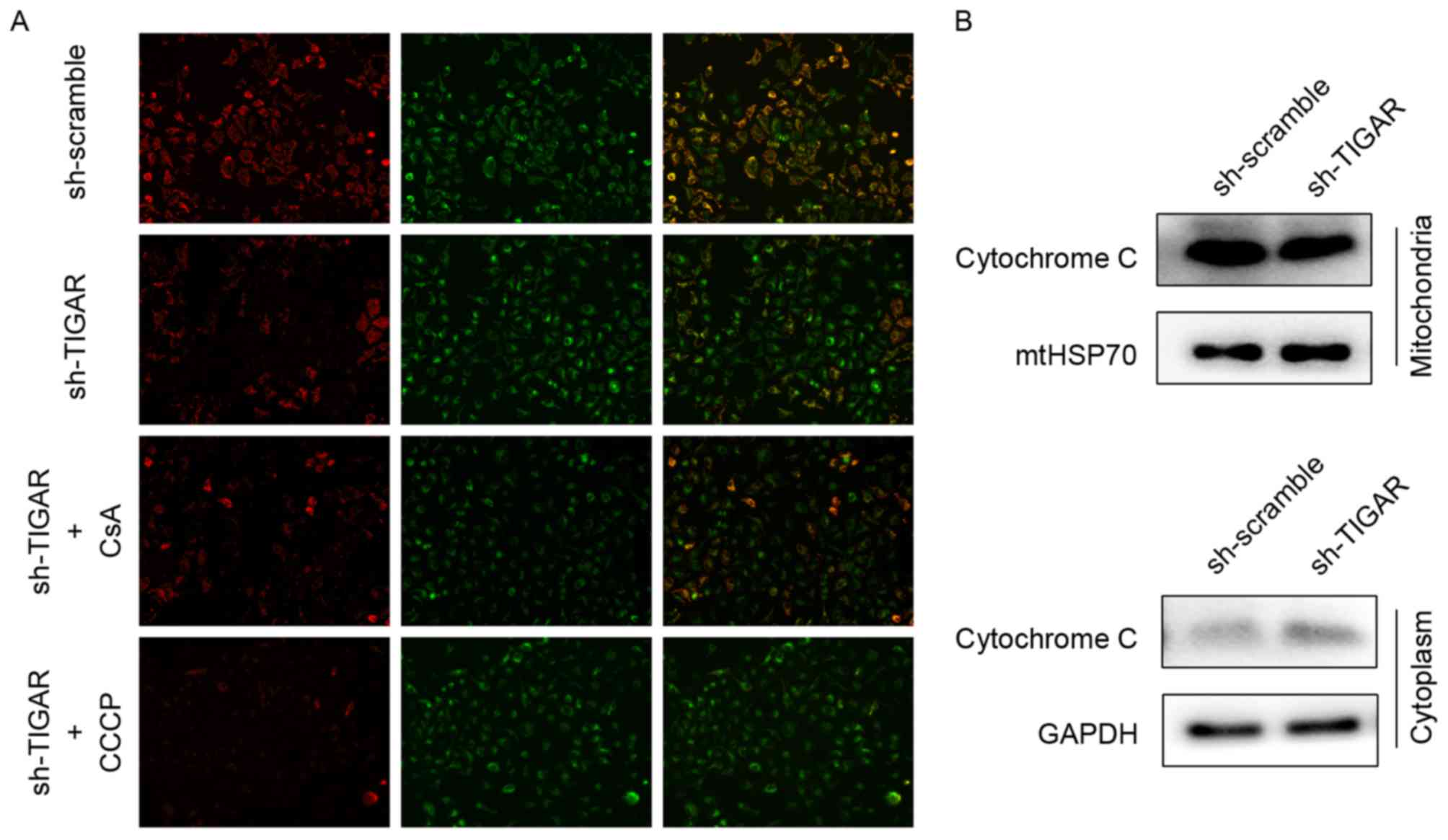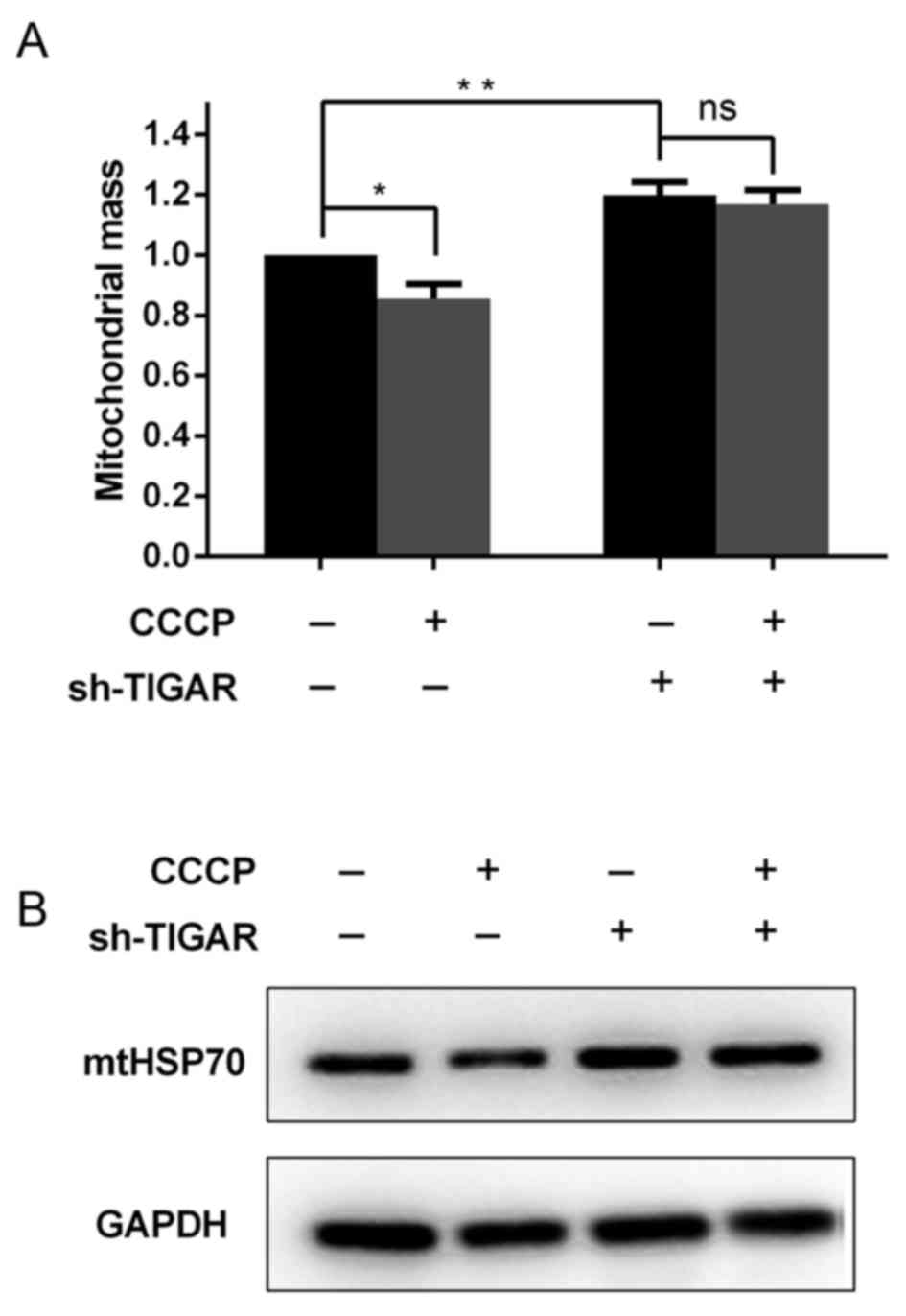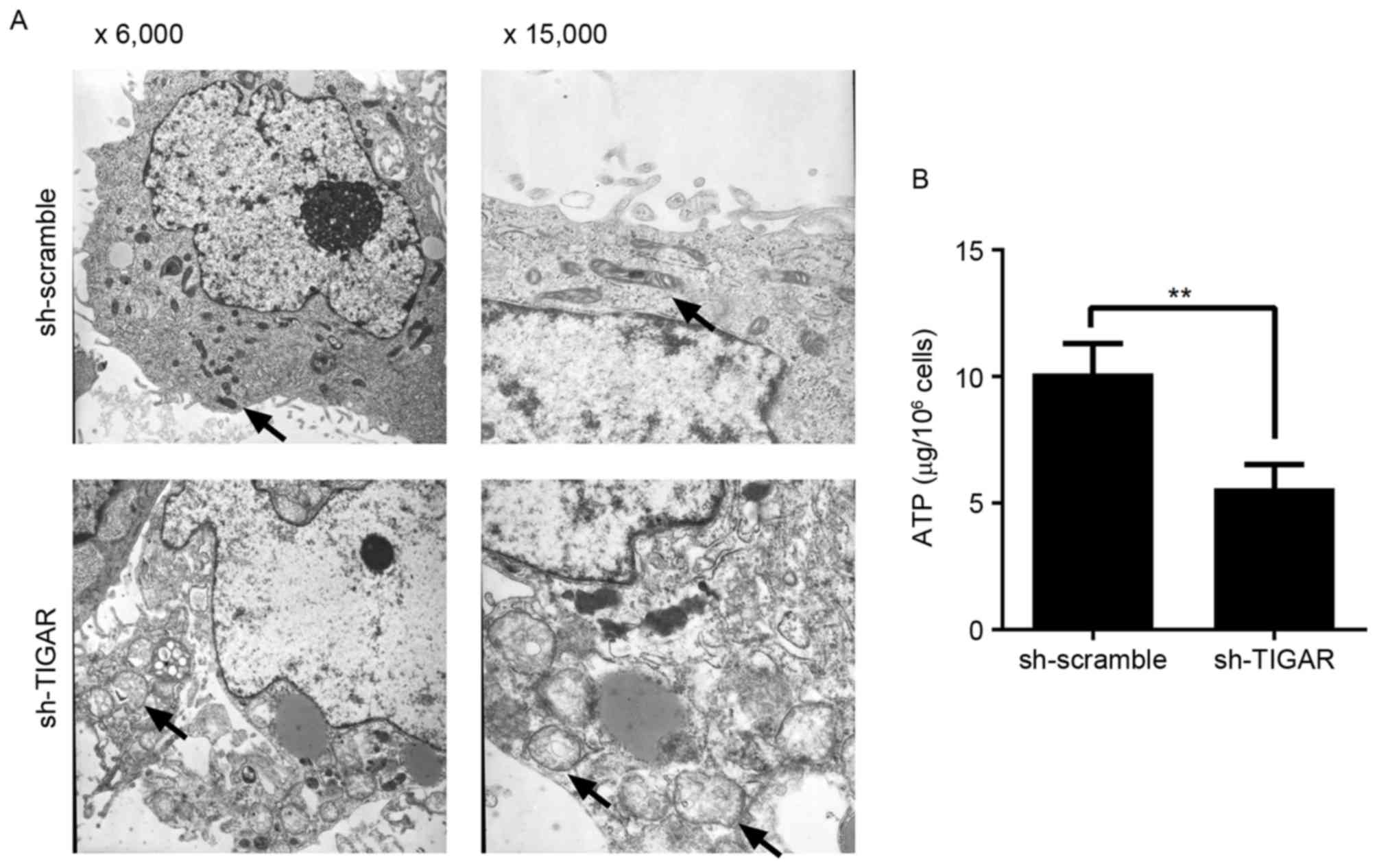TP53-induced glycolysis and apoptosis regulator is indispensable for mitochondria quality control and degradation following damage
- Authors:
- Published online on: October 31, 2017 https://doi.org/10.3892/ol.2017.7303
- Pages: 155-160
-
Copyright: © Feng et al. This is an open access article distributed under the terms of Creative Commons Attribution License.
Metrics: Total
Views: 0 (Spandidos Publications: | PMC Statistics: )
Total PDF Downloads: 0 (Spandidos Publications: | PMC Statistics: )
Abstract
Mitochondria have been described as ‘the powerhouse of the cell’ as the organelle generates the majority of adenosine triphosphate (ATP) in cells to support life. Mitochondria can be damaged due to stress, for example by reactive oxygen species (ROS). TP53‑induced glycolysis and apoptosis regulator (TIGAR) serves a role in suppressing ROS damage and may protect mitochondria integrity. In the present study, the localization of TIGAR on mitochondria in 5‑8F cells was demonstrated. Furthermore, it was indicated that the knockdown of TIGAR using lentivirus‑short hairpin RNA induces the loss of mitochondrial membrane potential and cytochrome c leakage. However, these damaged mitochondria were not degraded in cells, but exhibited an abnormal appearance as indicated by mitochondrial swelling, crista collapse and vacuolization, with physiological dysfunction marked by reduced ATP production. Therefore, TIGAR maybe an indispensable protein for mitochondrial protection and degradation following cellular damage.













